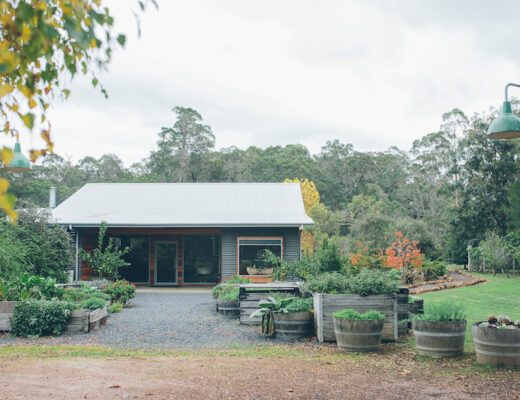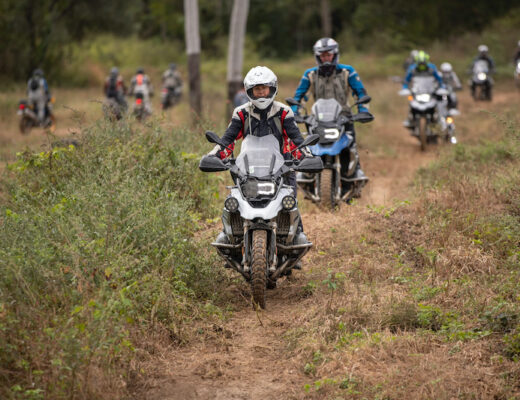As the final sun-sets roll through on the year that was 2021, the urgency to complete my Motorcycle Diary posts of this extraordinary trip is pressing. My apologies in advance for what will be a bit of inbox bombing as I attempt to complete posting the final 3 months of travel over the next few days. However, given you’re all lazing by the pool or on the beach with a beverage and a book firmly in hand I’m hoping my ramblings won’t be as intrusive as they might be on an ordinary working day.
July picks up from my time in Darwin; a city with a warm and welcoming heart of a battle-scared frontier town; followed by Katherine, Timber Creek and Halls Creek. Having dodged border closures throughout my travels, unfortunately I bypassed the chance to experience Kununurra at large due to a rather hasty beeline route into self-isolating in Halls Creek. Hopefully another time soon. Until then, here’s July’s wanderings.

SAGE FAMILY HOME AWAY FROM HOME: I’ve been incredibly lucky having family, friends and colleagues spread throughout Australia to meet up and stay with along the way. Thanks to the kind generosity Sage family in Howard Springs (an outer suburb of Darwin most notable known for the quarantine facility) who are related to close Perth friend Rosie, I stayed a few weeks on their property located a short distance out of Howard Springs. No strangers to orphan-travellers who end up on their doorstep, their hospitality was second to none and made my extended time, which included a week’s lockdown in the Northern Territory feel like a home away from home.

HOWARD SPRINGS, NORTHERN TERRITORY: Nearby to the Sage’s is the Howard Springs Nature Park, which has been a recreational venue for the people of Darwin since World War II. The weir was built in 1944 by the Royal Australian Engineers to improve access to the waterhole. On one of the weekends we took the 1.8 kilometre walking track along which there is signage of the many varied plants and animals of the area. There’s a shorter track into the dense rainforest that also ends where the spring feeds the main pool.


As in Far North Queensland, Banyan trees are commonly seen in parklands and on rural properties in the Northern Territory. Their botanical name is Ficus virens. When not surrounded by other trees, Ficus virens will put down aerial roots to prop up its branches. These extend to the ground and often rival the main trunk in size. The Sage family had a couple of these impressive trees along with a curious, sweet but rather large cross-breed cow called Pepper who grazed around the back of the block keeping a close eye on the frequent social comings and goings.

JO VICTORIA CERAMICS, TACTILE GALLERIES, NORTHERN TERRITORY: The Tactile Galleries are located very close by to the main Museum & Art Gallery of the Northern Territory and where I stopped by to take a look at the textural ceramic work of Jo Victoria. Her artist statement reads: ‘My art practice has focused on revealing hidden stories in landscapes. I am interested in exploring the qualities of a place and attempt to capture a feeling, or an essence of this place within the work I create. I am interested in giving voice to silent histories that are embodied or encased in a place.’


‘I seek inspiration from the rocky outcrops that lay witness to deep time at my favourite south coast destination that form the intertidal zone between wild ocean and estuary, sandwiched between white rounded beaches and rugged cliff faces. These various watery weathered places hold stories within their forms, some will never be known, some may be revealed by natural and cultural interference. I use images that appear fossil like within the body of the works as metaphors for these embodied stories. These images are revealed with light through thin translucent walls, ghost like. Watery glazes hint at the oceans influence and sharp, vulnerable yet resilient edges on the forms provide a delicate yet dangerous feel to the exposed bleached vessels. These qualities speak of the vulnerability, strength and danger of the ocean’s edge.’ Jo Victoria


MUSEUM AND ART GALLERY, NORTHERN TERRITORY (MAGNT): Set in a scenic location overlooking Fannie Bay in Darwin, MAGNT is home to internationally renowned artistic, cultural and scientific collections and research programs. Each year MAGNT presents a dynamic program of internally-developed exhibitions, carefully curated from the collection, and the best travelling exhibitions from around Australia. It is also the home of the annual Telstra National Aboriginal and Torres Strait Islander Art Awards (NATSIAA)– the most significant celebration of its kind in Australia.

DARWIN MARKETS: Darwin’s diverse multicultural population supports a number of markets that are packed with both fresh and prepared street food dishes and snacks that make you feel instantly transported to their places of origin; most often throughout Asia, India and Africa. Mary’s Laksa at the Parap Markets has long been one of the most famous and queued up for. As you can see on the above signage, there are many choices for protein combinations; all of which are served in a delicious fragrant and spicy broth that justifies the wait.




RAPID CREEK MARKETS, DARWIN: Along with the Parap Market, Rapid Creek was also a favourite, particularly for fresh produce. Located about 10km out of the Darwin CBD, Rapid Creek Markets is Darwin’s oldest running market, operating every Saturday and Sunday offering a diverse range of fresh organic produce, Asian fruits, vegetables, seafood, herbs and spices. It also offers exotic plants, flowers, local handmade arts and crafts, massages and a tasty selection of sweets, treats, drinks and meals.

NITMILUK (KATHERINE) GORGE: Having passed through Katherine on my way to Darwin, I took a little more time on my return as my travels continuing West required heading in a southerly direction first. Katherine Gorge is about 30km out of the town and a must-see. Nitmiluk Gorge, a deep gorge carved through ancient sandstone by the Katherine River is made up of thirteen gorges, with rapids and falls, and follow the Katherine River, which begins in Kakadu.






ALY DE GROOT, TEXTILE ARTIST: Aly De Groot is a contemporary fibre artist who lives and predominately works in the Northern Territory. At the time of my visit to Godinyamin, her stunning solo exhibition of work on paper and from found materials, titled ‘From Mangroves to Mataranka’ was showing.


POP ROCKET CAFE, KATHERINE: Memorable restaurant / cafe food experiences in regional / remote Australia can be few and far between, which means news of the ones that are worth the extra mile travels quickly between hungry travelers. One such tip was the Pop Rocket Cafe in Katherine. Open during the dry season and located in the carpark of the Katherine Hot Springs the menu included spiced and shredded beef brisket charcoal bao buns, which were as delicious as they sounded.


KATHERINE HOT SPRINGS: Situated on the banks of the Katherine River within the Katherine township, these natural thermal springs are a series of clear pools framed by native vegetation loved by locals and sought out by visitors alike. The bubbling hot springs has an average temperature of 25-30 degrees Celsius with the very top pool, located directly at the source of the spring.

SOUTH AUSTRALIAN VISIT: On a wing and a prayer, crossing borders has become a take-your-chances moment and up until this point I’d been quite lucky. Taking a flight from Darwin to Adelaide to surprise my brother for his 50th birthday unfortunately coincided with the rapid emergence of the Delta strain in South Australia. My plan of a week’s stay became a quick ‘surprise’ and turn-around flight back to the Northern Territory within a 48 hour period. Fortunately my entry back in was permitted at the time of my arrival however my forward plans to travel back into Western Australia were not as straight forward.

TIMBER CREEK, NORTHERN TERRITORY: Waiting out 3 nights in Timber Creek, 200 km from the Kununurra border while my G2G Pass was processed allowed for a little time to check out the nearby landscape including a magnificent old boab tree.



GREGORY’S BOAB TREE, NORTHERN TERRITORY: Gregory`s Tree Reserve marks the site of Gregory`s camp in 1855 and 1856. Gregory’s Tree Historical Reserve is an Aboriginal sacred site and registered heritage site. Gregory`s Tree has historical and social significance as it is a living monument to the exploration of the North of Australia, in particular the North Australia Expedition led Gregory in 1855 and 1856. On July 2, 1856 Gregory left an inscription on the tree , indicating where he left a letter in case the expedition team should get lost. Turning east, the party explored the Elsey, Roper and Macarthur Rivers, then travelled back to Brisbane by way of the Flinders, Burdekin, Fitzroy and Burnett Rivers. They reached Brisbane on 16 December 1856.


HALLS CREEK, WESTERN AUSTRALIA: As I’d been in SA when the first Delta cases emerged and sought entry into WA within a 14 day period post departure, a condition of my entry was 11 days in self-isolation. 3 days in the Northern Territory included. Fortunately I could undertake this in a pre-organised self-contained Donga in Halls Creek that I traveled to directly from the border.

HALLS CREEK, WESTERN AUSTRALIA: The two mandatory PCR tests were undertaken at the Halls Creek hospital. Wearing a mask, it was a 10 minute walk from the Donga, which seemed such a luxury compared to the prison of hotel quarantine. Each plant and scrap of vegetation, blue sky and open air, albeit behind a mask, seemed saturated with colour and vibrancy.


HALLS CREEK, WESTERN AUSTRALIA: A Pear & Almond Cake baked in a frying pan / cake tin substitute and years of sun-blistered peeling paint on the back wall of a shed facing the back street walk to the Halls Creek Hospital.






